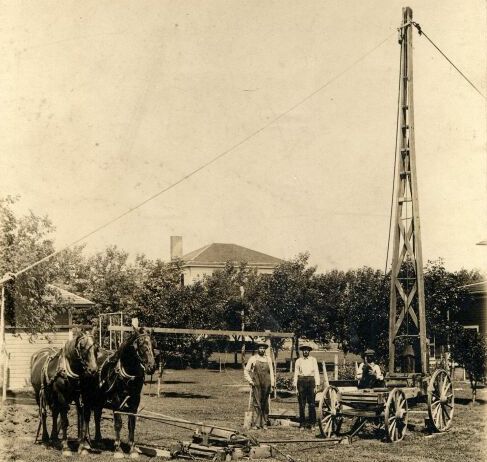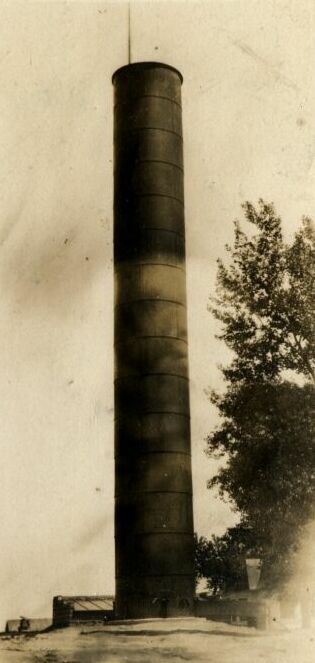Winnetoon, Nebraska
The Farmer’s Telephone Exchange was organized at this time. It was a large exchange, employing a number of linemen and switch board operators.
A. A. Baker was the secretary-treasurer.
The year 1908 marked a most important event in Winnetoon’s history. The citizens decided to go modern with
a city water works. No more wells and pumps! The standpipe was built at a cost of $1800.
John Lenger bought the hotel and organized his Winnetoon Bank. Boyd Long started the barber shop.
Winnetoon at one time had a newspaper of its own. The Winnetoon Pioneer was the town’s first publication. It was founded in 1910 by
J. F. Papik.
|
 |
 |
Winnetoon, a good horse and buggy town, reached its peak in 1914, when the Danish Lutheran Church and high school were built. Now Winnetoon’s population was over 300. Its businesses included two banks, two lumber yards, three groceries (George Brooks owned one too), two blacksmith shops, two elevators, two hog buyers, a drug store, implement and plumbing shop, carpenter shop, harness and shoe shop, a saloon, a printing office, a hardware store, butcher shop, feed store, hotel, pool hall, restaurant, barber shop, telephone office, photograph gallery, post office, two contractors, a mason and a depot with plenty of trains daily. Some very good baseball and basketball teams were sponsored by this community. Winnetoon prospered for many years.
Then came the mid 1930’s and its Great Depression and the drought. Winnetoon went the way of many small towns. Houses were moved out. Businesses were moved, closed or torn down. The saloon, a store and a hardware store burned down in the fall of 1943. In 1941, the high school was discontinued. The railroad depot, no longer in use, was
torn down in 1965. The grade school closed in 1967. An era had passed.
 The school was turned into a community building and housed a historic picture display until 2002, when it was sold to a private individual. Most of the pictures on the web site came from this display which is now stored at the village’s new Community Building.
The school was turned into a community building and housed a historic picture display until 2002, when it was sold to a private individual. Most of the pictures on the web site came from this display which is now stored at the village’s new Community Building.
In 1994 , while cleaning out a room at the school house, a box of diaries were discovered. These had been written by A.W. Crandall and opened a window on day to day life in Winnetoon from 1914 until 1938. Though citizens would have loved to keep them, the diaries were returned to the Crandall family. They took the diaries to the Nebraska State Historical Society which deemed them of significant importance and microfilmed all of the diaries.
The finding of the diaries prompted the organization of the Winnetoon Historical Society. Members purchased a set of the microfilms so once again citizens and visitors alike could enjoy
A. W. Crandall’s unique view of life in rural America in an earlier era.
Winnetoon has held its own since the early days of prosperity. At the turn of this century the population has stayed at around 70 or so - when everyone is home! Though the names and faces of its residents have changed many times over the years, Winnetoon continues to be a fine place to raise a family or to retire to.
Previous
Sources of information are all
or some of the listings below:
R.J. Jones - now deceased
son of the town’s organizer, Seth Jones
Ruby Jones Pinkerton - now deceased daughter of Seth Jones
Howard Crandall -now deceased city clerk from 1901 - 1910
E.C. Clare - now deceased retired city mayor
Personal memories of former citizens collected by the Winnetoon
Historical Society
Gayle Neuhaus - researcher, Winnetoon Historical Society
Peggy Ebel - Winnetoon Historical Society